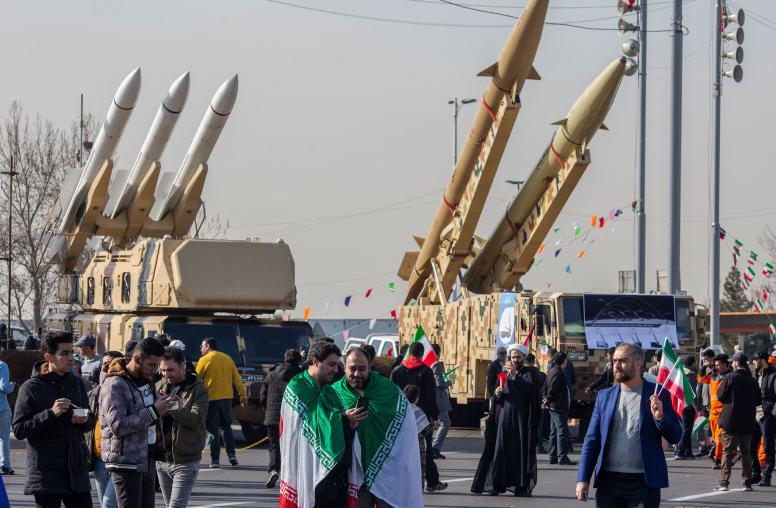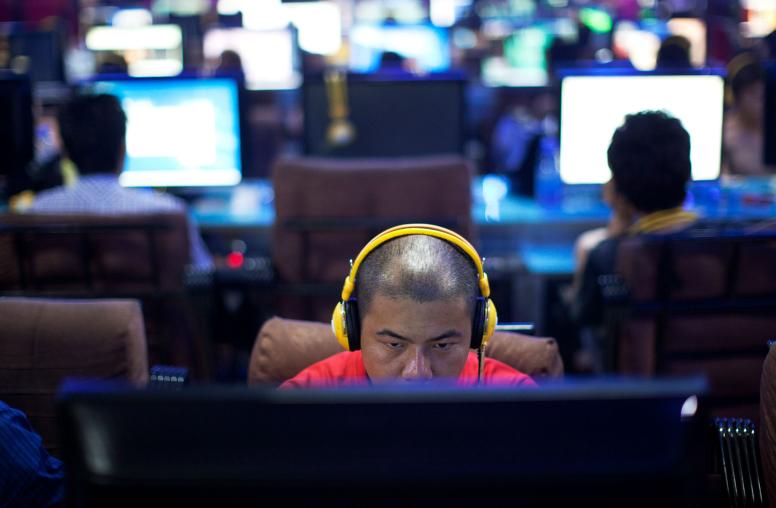A Big Step Forward in U.S.-India Defense Ties
Washington wants greater operational cooperation with New Delhi in order to share the burden of deterring aggression by any major power, including China.
U.S. Defense Secretary Lloyd Austin’s arrival in New Delhi on Sunday comes at a critical moment, just two weeks before Prime Minister Narendra Modi’s State visit to Washington, DC. As with any ministerial visit, the secretary and his counterpart, Defense Minister Rajnath Singh, will take stock of recent successes and coming opportunities. They will discuss possible deliverables for the upcoming Biden-Modi summit. But the visit will be a true success if they dig into discussions of the kind of reciprocal expectations that can take the U.S.-India defense partnership to new heights.

Deepening Defense Ties
First, it is important to recognize and enumerate the long list of accomplishments of U.S.-India defense ties, which have been the load-bearing pillar of the strategic partnership. The two countries have built intelligence-sharing channels and assessment capabilities to better identify and prepare for threats; developed access agreements for military logistics to support each other’s reach; and conducted regular military exercises to improve our capabilities and interoperability.
India has been able to leverage state-of-the-art defense acquisitions from the United States to counter Chinese assertiveness, including strategic lift to transport and resupply its troops deployed along the mountainous Line of Actual Control (LAC), as well as a variety of advanced maritime patrol aircraft to defend its maritime approaches. Washington has quickly backed New Delhi in all of its recent border crises with China and Pakistan. Most significantly, during the 2020 military crisis with China that claimed the lives of 20 Indian soldiers, the United States shared vital intelligence, rushed critical supplies and then approved the lease of MQ-9B drones for deterrence by detection. The two countries are taking another major step toward a shared mission of securing the Indian Ocean commons through India’s recent participation in the Combined Maritime Force, and the Quad launch of the Indo-Pacific Partnership for Maritime Domain Awareness.
Second, Austin’s visit to India presages several opportunities. Reporting suggests the U.S. government is poised to authorize joint production of GE F-414 jet engines in India to power indigenous fighter aircraft. Insiders have also reported the two defense ministries are planning to co-launch an innovation bridge first promised when both national security advisers launched the Initiative on Critical and Emerging Technology last year. The INDUS-X event in June will kick off a bilateral process to connect our national security innovation ecosystems to research, develop and produce cutting-edge military technologies. Such a combination of high-level technology sharing and bottom-up co-development efforts would be unprecedented. Despite India’s licensed production of Russian fighter aircraft for 60 years, it has never been able to obtain or derive technology as advanced as what the United States is offering today. The prospect of Indian defense startups designing, prototyping and producing in partnership with leading U.S. defense companies will accelerate India’s indigenization process.
U.S. Interests
Of course, the United States is not doing this out of altruism; it is operating from a theory of “integrated deterrence” where India’s enhanced ability to defend itself and deter aggression and coercion will contribute to regional peace and stability. Deterrence will not stem simply from India’s existence or expansion of its latent power. If that was enough, India’s rapid rise over the past two decades should have deterred Chinese aggression along LAC and the Indian Ocean, which it clearly has not. Deterrence will depend on what India does, how it operationalizes and postures its power, and who it cooperates or at least synchronizes with. These are the most important issues for U.S. and Indian leaders to discuss, if only in private.
The U.S. government has undertaken herculean efforts to bypass or disrupt standard bureaucratic processes to produce the jet engine offer and defense innovation bridges. One senior American defense official told us, “we’ve broken all the china,” to secure a U.S. offer to share this level of technology. India has the opportunity to take some reciprocal strides toward the shared goal of deterring China and major power conflict. Calls for reciprocity have often been mistranslated as demand for more Indian defense purchases, and India rightly points to $20 billion purchased from the United States over 15 years. This misses the mark entirely.
The United States’ priority with India is not just defense sales, especially after Russia’s invasion of Ukraine has generated tens of billions of dollars in more European purchases in 2022 alone. What the United States seeks from India is greater operational cooperation to share the burden of deterring aggression by any major power, including China. Indigenous Indian capabilities help, but the key is more effective deterrence activity that complicates adversary planning, increases their uncertainty and creates hesitation. Sowing doubt is key to convincing your foe to delay military aggression for another day.
For both the United States and India, more effective collaborative deterrence requires more complex military exercises, more frequent use of logistics arrangements, more presence in different theaters, and greater access and overflight, all of which keeps China guessing. More frequent employment of already signed logistics arrangements — such as ship-to-ship underway replenishment or U.S. maritime patrol aircraft refueling in Port Blair — can add to this uncertainty.
India and the United States are partners, not allies, and neither expects the other to make iron-clad commitments to mutual defense. But routine access and active military engagement needed to enhance deterrence need not fall under an alliance paradigm. Even nonaligned countries can tilt and strategically enable their partners’ efforts to maintain peace and stability. Singapore and Malaysia — both steadfast in not choosing sides — have enabled U.S. and Australian air surveillance missions in the South China Sea, not out of alliance commitments but because they see these advancing their own security and deterrence interests.
Finally, just as the United States helps India assess and plan for the LAC crisis, India can also start to engage more seriously on the central challenge that vexes U.S. defense planners — a potential cross-Strait crisis over Taiwan. Discussions with U.S. interlocutors on potential Taiwan scenarios will not tie Indian hands, commit it to send ships to the Taiwan Strait or take up arms against China during a crisis. India might also initiate more serious internal assessments about the likelihood and consequences of a Taiwan crisis and its direct effects on India and the region, which could be far more severe than the terrible impact of Russia’s invasion of Ukraine.
Overall, with bilateral relations strong, the upcoming visit will mark a strengthening of the defense partnership. The United States is taking a big step forward. India should consider reciprocal steps of its own.
This article originally appeared in Hindustan Times.



